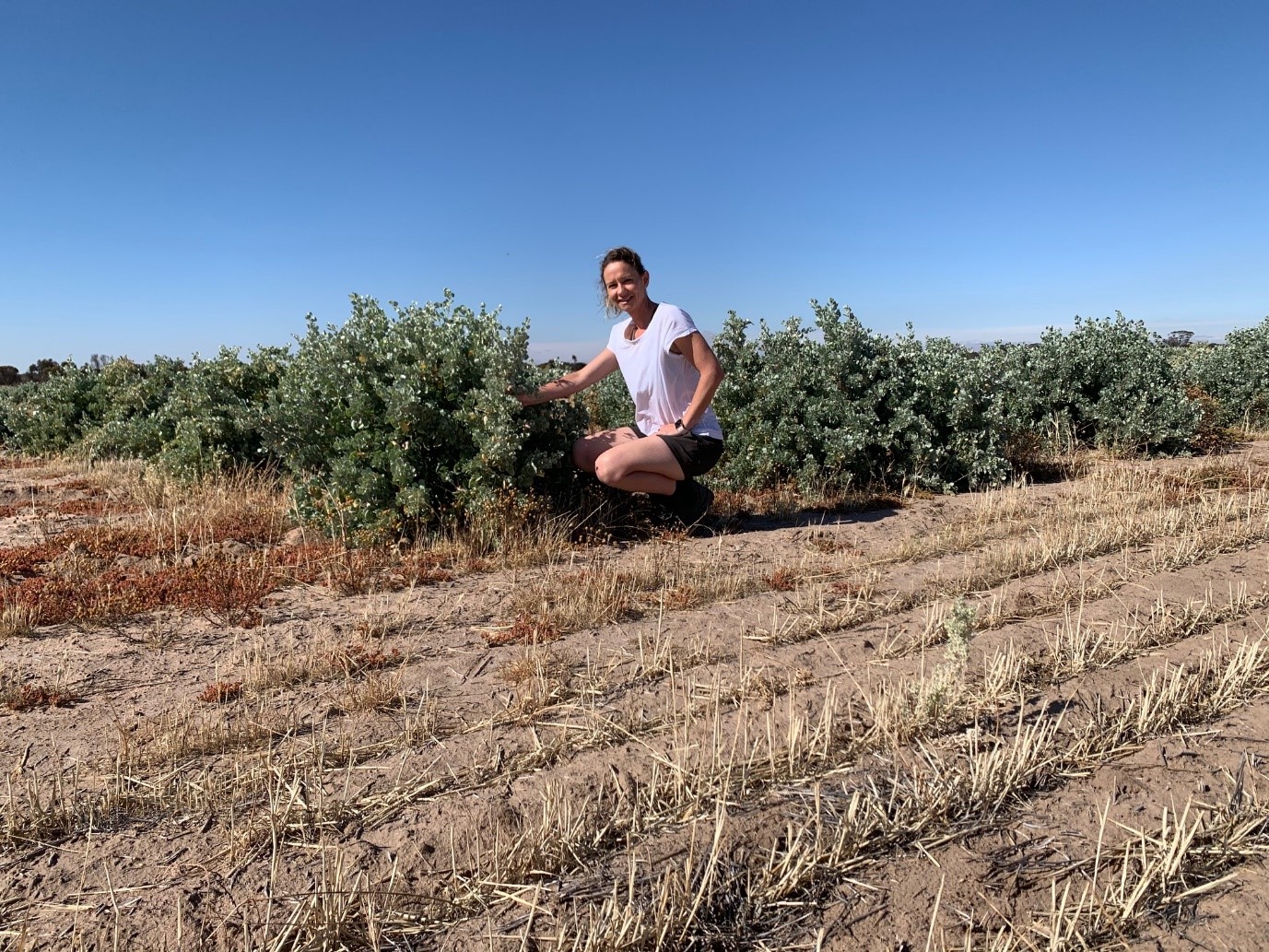In 2012, Dean and Tanya Butler partnered with Wheatbelt NRM to investigate using Saltbush as a better use of salt impacted areas of their farm at Belka Valley.
10,000 saltbush were planted in an area that at the time was samphire and blue bush. With only 50mm of rain the establishment rate was 90%.
Since then Dean and Tanya have made it standard practice to plant on average 10ha of saltbush each year. Tanya confirmed, “we do this as part of our investment in our sheep enterprise and to address the poor performing soil types on our property”.
The Butlers plant multi-species as they like the look of a diverse system rather than a monoculture, and each species provides something different for the stock.
Overall the Butlers have planted 75,000 plants.
Tanya says this addition to their farming system has provided many benefits including the ability for them to use areas of paddocks that are no longer performing for cropping.
“Now that we are managing our cropping paddocks more effectively, we have increased yields on the arable soil and lowered input wastage (fertiliser and herbicides) in areas that underperform in a cropping phase.”
The saltbush is used mainly at lambing time and provides shade, shelter and feed.
Tanya’s message to others considering saltbush, “Saltbush/forage shrubs are a great asset for a mixed farming system, particularly where there is unproductive soil types for cropping.”
The establishment and use in the sheep phase increases profitability in the cropping phase per hectare.
The gains for sheep in the lambing phase, while anecdotal, is also positive as we have very good lamb survival at lambing time in our saltbush plantations.”
This project is supported through funding from the Australian Government’s National Landcare Program.


